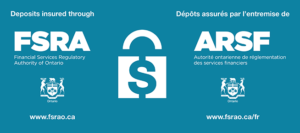Essential Tax Strategies for 2025
With tax season upon us, we asked our Wealth Consultant, Kay LaPointe, for her best advice on protecting and keeping more of your hard-earned money.
Here are five tax saving tips and strategies everyone should consider.
1. Utilize RRSPs, TFSAs, RESPs to the max
One of the main components of a tax strategy is to utilize tax-deferred or tax-friendly accounts: Registered Retirement Savings Plans (RRSPs), Registered Education Savings Plans (RESPs) and Tax-free Savings Accounts (TFSAs). Each plan has its own benefits for tax planning purposes. Working with a qualified financial planner can help determine which plan(s) most benefit your situation.
2. Charitable contributions
Did you contribute to a registered charity before February 28th, 2025? If yes, you may be eligible to receive a donation credit for your 2024 tax year; however, you must obtain a tax receipt from the qualifying charity. The credit is:
- 15% of the donation for the first $200 in donations each year; and
- 29% thereafter (up to 33% for those in the top tax bracket).
Provincial credit rates vary but generally increase at that threshold as well. Donations made by you or your partner can be pooled and claimed on one tax return.
3. Income Splitting
Income splitting can occur before retirement, through spousal RRSPs, or in retirement through splitting a pension. In a spousal RRSP, the higher-income earner would contribute to the RRSP of the lower-income spouse within their available contribution limit. This transaction can result in a lower overall tax rate for the couple as the higher-income spouse would receive a deduction for tax purposes in the year of contribution. Later, when the funds are withdrawn from the lower-income spouse’s RRSP, the tax obligation on the RRSP withdrawal may be lower as it is taxed at the lower-income spouse’s tax rate.
If you are at least 65 years of age, you may want to consider converting a portion of your Registered Retirement Savings Plan (RRSP) to a RRIF (if you do not already have a RRIF) so that you can benefit from pension splitting. Any withdrawals from your RRIF, whether minimum withdrawals or other amounts, would qualify for pension splitting. Note that RRSP withdrawals are not considered to be pension income.
4. Deduct Home Office Expenses
If you operate a business from your home, you may profit from additional tax benefits.
If your home is your primary place of business and you have a business income, you can claim certain use-of-home expenses. These can include utilities, mortgage interest on your residence, property taxes, repairs and maintenance, or home insurance. Work with a qualified tax professional to determine what deductions you may be entitled to.
5. Claim the First-Time Home Buyers’ Tax Credit
If you and your partner decide to take the plunge and buy that first property, you can claim $10,000 and get a credit of up to $1,500. That’s a nice housewarming gift!
To qualify for this tax break, you or your partner can’t have previously lived in a home owned by either of you in the past four years.
In addition to your tax accountant, consider reaching out to a member of our Investment Team today to learn more about strategies that may help minimize your 2024 tax liability.

Kay LaPointe, Wealth Consultant, WFCU Investment Services










